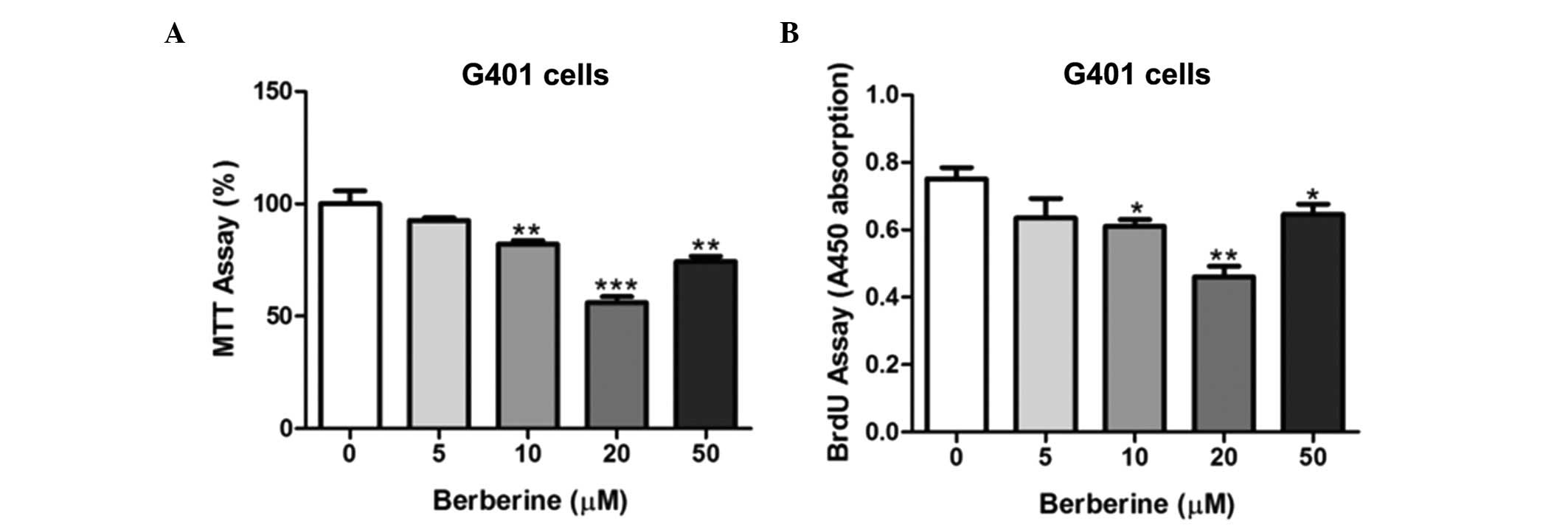|
1
|
Scott RH, Stiller CA, Walker L and Rahman
N: Syndromes and constitutional chromosomal abnormalities
associated with Wilms tumour. J Med Genet. 43:705–715. 2006.
View Article : Google Scholar : PubMed/NCBI
|
|
2
|
Malkin D, Sexsmith E, Yeger H, Williams BR
and Coppes MJ: Mutations of the p53 tumor suppressor gene occur
infrequently in Wilms’ tumor. Cancer Res. 54:2077–2079.
1994.PubMed/NCBI
|
|
3
|
Grundy PE, Breslow NE, Li S, et al;
National Wilms Tumor Study Group. Loss of heterozygosity for
chromosomes 1p and 16q is an adverse prognostic factor in
favorable-histology Wilms tumor: a report from the National Wilms
Tumor Study Group. J Clin Oncol. 23:7312–7321. 2005. View Article : Google Scholar
|
|
4
|
Rivera MN, Kim WJ, Wells J, et al: An X
chromosome gene, WTX, is commonly inactivated in Wilms tumor.
Science. 315:642–645. 2007. View Article : Google Scholar : PubMed/NCBI
|
|
5
|
Major MB, Camp ND, Berndt JD, et al: Wilms
tumor suppressor WTX negatively regulates WNT/beta-catenin
signaling. Science. 316:1043–1046. 2007. View Article : Google Scholar : PubMed/NCBI
|
|
6
|
Rivera MN and Haber DA: Wilms’ tumour:
connecting tumorigenesis and organ development in the kidney. Nat
Rev Cancer. 5:699–712. 2005.
|
|
7
|
Kim WJ, Rivera MN, Coffman EJ and Haber
DA: The WTX tumor suppressor enhances p53 acetylation 9 by
CBP/p300. Mol Cell. 45:587–597. 2012. View Article : Google Scholar : PubMed/NCBI
|
|
8
|
Hou Q, Tang X, Liu H, et al: Berberine
induces cell death in human hepatoma cells in vitro by
downregulating CD147. Cancer Sci. 102:1287–1292. 2011. View Article : Google Scholar : PubMed/NCBI
|
|
9
|
James MA, Fu H, Liu Y, Chen DR and You M:
Dietary administration of berberine or Phellodendron
amurense extract inhibits cell cycle progression and lung
tumorigenesis. Mol Carcinog. 50:1–7. 2011.
|
|
10
|
Harikumar KB, Kuttan G and Kuttan R:
Inhibition of progression of erythroleukemia induced by Friend
virus in BALB/c mice by natural products - berberine, curcumin and
picroliv. J Exp Ther Oncol. 7:275–284. 2008.PubMed/NCBI
|
|
11
|
Yan K, Zhang C, Feng J, et al: Induction
of G1 cell cycle arrest and apoptosis by berberine in bladder
cancer cells. Eur J Pharmacol. 661:1–7. 2011. View Article : Google Scholar : PubMed/NCBI
|
|
12
|
Kim S, Han J, Kim NY, et al: Effect of
berberine on p53 expression by TPA in breast cancer cells. Oncol
Rep. 27:210–215. 2012.PubMed/NCBI
|
|
13
|
Meeran SM, Katiyar S and Katiyar SK:
Berberine-induced apoptosis in human prostate cancer cells is
initiated by reactive oxygen species generation. Toxicol Appl
Pharmacol. 229:33–43. 2008. View Article : Google Scholar : PubMed/NCBI
|
|
14
|
Lv X, Yu X, Wang Y, et al: Berberine
inhibits doxorubicin-triggered cardiomyocyte apoptosis via
attenuating mitochondrial dysfunction and increasing Bcl-2
expression. PLoS One. 7:e473512012. View Article : Google Scholar
|
|
15
|
Tillhon M, Guamán Ortiz LM, Lombardi P and
Scovassi AI: Berberine: new perspectives for old remedies. Biochem
Pharmacol. 84:1260–1267. 2012. View Article : Google Scholar : PubMed/NCBI
|
|
16
|
Kim S, Han J, Lee SK, et al: Berberine
suppresses the TPA-induced MMP-1 and MMP-9 expressions through the
inhibition of PKC-α in breast cancer cells. J Surg Res.
176:e21–e29. 2012.PubMed/NCBI
|
|
17
|
Chitra P, Saiprasad G, Manikandan R and
Sudhandiran G: Berberine attenuates bleomycin induced pulmonary
toxicity and fibrosis via suppressing NF-κB dependent TGF-β
activation: a biphasic experimental study. Toxicol Lett.
219:178–193. 2013.PubMed/NCBI
|
|
18
|
Alzamora R, O’Mahony F, Ko WH, Yip TW,
Carter D, Irnaten M and Harvey BJ: Berberine reduces cAMP-induced
chloride secretion in T84 human colonic carcinoma cells through
inhibition of basolateral KCNQ1 channels. Front Physiol. 2:332011.
View Article : Google Scholar : PubMed/NCBI
|
|
19
|
Kim HS, Kim MJ, Kim EJ, Yang Y, Lee MS and
Lim JS: Berberine-induced AMPK activation inhibits the metastatic
potential of melanoma cells via reduction of ERK activity and COX-2
protein expression. Biochem Pharmacol. 83:385–394. 2012. View Article : Google Scholar : PubMed/NCBI
|
|
20
|
Kim MK, Min DJ, Rabin M and Licht JD:
Functional characterization of Wilms tumor-suppressor WTX and
tumor-associated mutants. Oncogene. 30:832–842. 2011. View Article : Google Scholar : PubMed/NCBI
|
|
21
|
Hardie DG: AMP-activated protein kinase:
an energy sensor that regulates all aspects of cell function. Genes
Dev. 25:1895–1908. 2011. View Article : Google Scholar : PubMed/NCBI
|
|
22
|
Egan DF, Shackelford DB, Mihaylova MM, et
al: Phosphorylation of ULK1 (hATG1) by AMP-activated protein kinase
connects energy sensing to mitophagy. Science. 331:456–461. 2011.
View Article : Google Scholar : PubMed/NCBI
|
|
23
|
Gwinn DM, Shackelford DB, Egan DF, et al:
AMPK phosphorylation of raptor mediates a metabolic checkpoint. Mol
Cell. 30:214–226. 2008. View Article : Google Scholar : PubMed/NCBI
|
|
24
|
Liu L, Ulbrich J, Müller J, et al:
Deregulated MYC expression induces dependence upon AMPK-related
kinase 5. Nature. 483:608–612. 2012. View Article : Google Scholar : PubMed/NCBI
|
|
25
|
Jones RG, Plas DR, Kubek S, et al:
AMP-activated protein kinase induces a p53-dependent metabolic
checkpoint. Mol Cell. 18:283–293. 2005. View Article : Google Scholar : PubMed/NCBI
|














